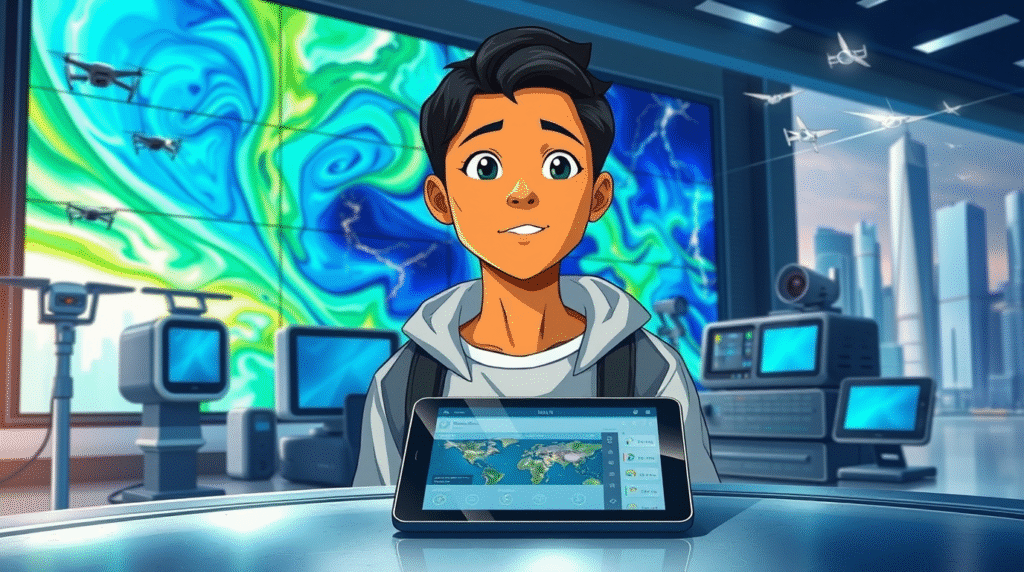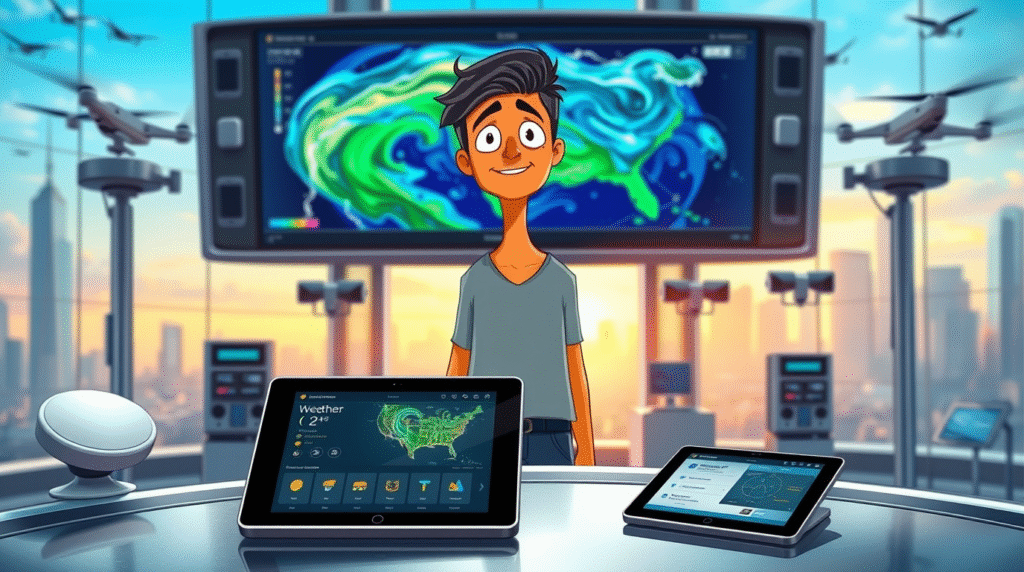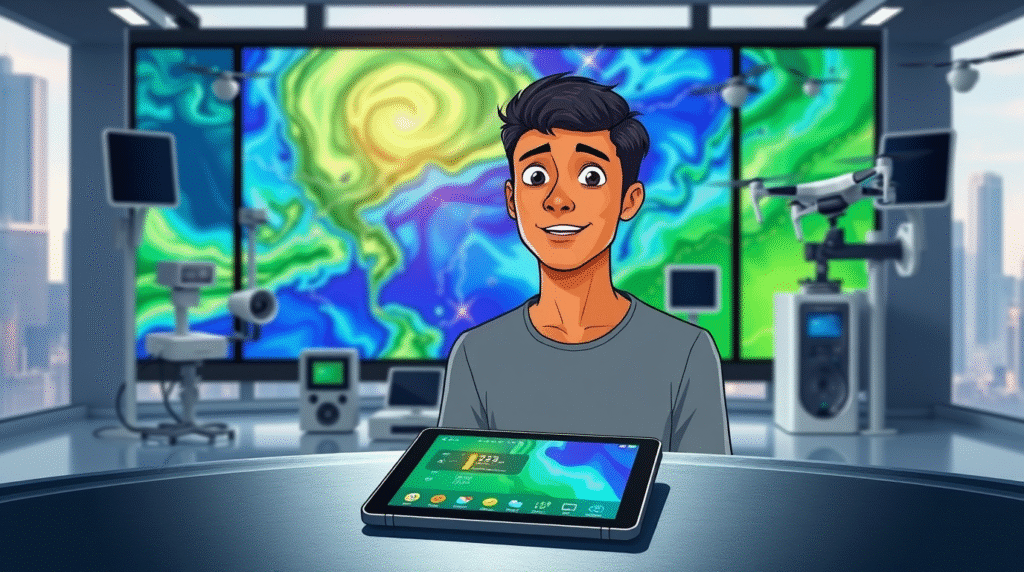Weather Tech is changing how we understand and respond to nature. From smart sensors to AI-powered forecasting, it helps us make better decisions about safety, travel, and daily life. With fast-growing innovations, weather technology has become an essential part of modern living. It connects science, technology, and sustainability in powerful ways that protect people and the planet.

What Is Weather Tech?
Weather tech refers to tools and systems designed to monitor, predict, and analyze weather conditions. These include satellites, radar systems, mobile apps, and AI-based prediction tools. Together, they collect data, process it, and deliver accurate updates. As technology evolves, weather tech is becoming faster, smarter, and more precise.
How Weather Tech Improves Forecast Accuracy
Accurate forecasts save lives and resources. Modern weather tech uses sensors, satellites, and data analytics to track atmospheric patterns. With machine learning, it detects small changes that signal major shifts in weather. Because of this, forecasts are now more dependable than ever before, helping communities prepare in advance.
The Role of Artificial Intelligence in Weather Tech
Artificial intelligence plays a huge role in improving weather tech. AI models analyze millions of data points from around the world. Then, they predict temperature changes, rainfall, and storm paths with incredible speed. Using AI-driven systems, scientists can identify trends that traditional methods might miss. As a result, prediction accuracy increases dramatically.
Satellite Technology and Its Impact
Satellites are the eyes of weather tech in space. They constantly monitor Earth’s atmosphere, oceans, and land. Data from these satellites helps track hurricanes, droughts, and climate shifts. Moreover, it provides real-time updates that improve safety during extreme weather events. The combination of space technology and AI is reshaping global forecasting.
Smart Sensors and Local Climate Monitoring
Smart sensors collect ground-level weather data like temperature, humidity, and wind speed. They can be installed in farms, cities, and even vehicles. By transmitting real-time data, they give accurate local updates. This helps farmers plan irrigation, cities manage pollution, and travelers stay safe during sudden weather changes.

Weather Tech and Climate Change Research
Weather tech supports climate research by tracking long-term environmental changes. It helps scientists study rising sea levels, melting glaciers, and global temperature shifts. Through advanced analysis, this technology identifies areas most affected by climate change. These insights guide governments and industries toward sustainable solutions and better disaster management.
How Businesses Benefit from Weather Tech
Businesses depend on weather tech to plan and protect their operations. Airlines use it to adjust flight paths safely. Farmers rely on it to manage crops efficiently. Logistics companies schedule deliveries according to weather predictions. With reliable data, businesses reduce risks, save money, and improve customer satisfaction.
Weather Tech in Agriculture and Food Security
Farmers use weather tech to monitor soil conditions and forecast rainfall. With this data, they make informed planting and harvesting decisions. It also helps manage water resources effectively, preventing waste. As a result, agricultural productivity increases while minimizing losses caused by unpredictable weather.
Everyday Uses of Weather Tech
Weather tech is part of daily life through smartphones and smart homes. Weather apps alert users about storms, UV levels, and air quality. Smart thermostats adjust indoor temperatures automatically based on external conditions. By using connected technology, people make better choices for safety, comfort, and energy savings.
Future Trends in Weather Tech
The future of weather tech looks promising with AI integration and quantum computing. These technologies will deliver hyper-local and faster forecasts. Additionally, renewable energy systems will depend on real-time weather data for efficiency. As innovation continues, weather tech will become even more vital for sustainability and smart living.
Challenges Facing Weather Tech
Although powerful, weather tech faces challenges like high costs, data security, and limited access in remote areas. Developing countries often lack the infrastructure to use advanced systems. However, global collaborations and open-data platforms are helping bridge this gap. As technology becomes more affordable, accessibility will expand worldwide.

The Role of Governments and Global Cooperation
Governments play an important role in weather tech advancement. They fund research, manage national weather systems, and share global data. Through partnerships with international organizations, they ensure better disaster preparedness. By promoting innovation and awareness, weather tech becomes a shared tool for global safety and sustainability.
Conclusion
Weather tech is shaping a smarter, safer, and more sustainable future. It combines innovation and intelligence to protect people, nature, and industries. As technology continues to grow, everyone benefits from faster alerts and smarter decisions. Embracing weather tech means building a world that adapts and thrives with nature.
Call to Action:
Stay informed, stay prepared, and stay connected with the latest weather tech tools. Explore smart apps, support clean technology, and be part of the movement toward a safer, data-driven planet.
FAQs
Q: What is the main purpose of weather tech?
A: Weather tech helps monitor and predict weather changes accurately to improve safety and planning in daily life.
Q: How does AI improve weather forecasting?
A: AI processes massive data sets quickly, detecting patterns and predicting weather events more precisely than traditional methods.
Q: Can weather tech help fight climate change?
A: Yes, it tracks long-term environmental changes, helping scientists and governments make sustainable decisions.
Q: Is weather tech useful for farmers?
A: Absolutely. Farmers use it to plan crops, manage water, and reduce losses caused by unpredictable weather.
Q: What is the future of weather tech?
A: The future involves smarter AI systems, faster computing, and global cooperation to make forecasts even more accurate and accessible.

